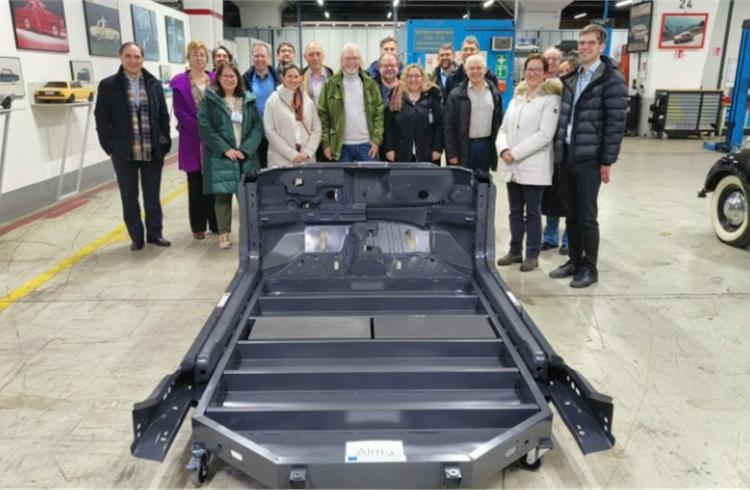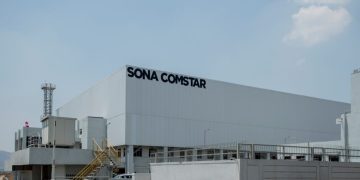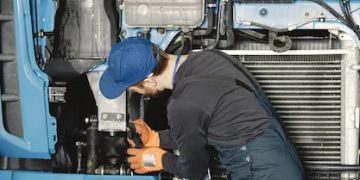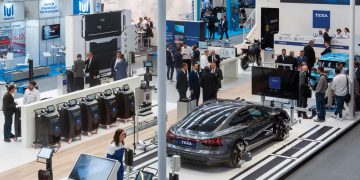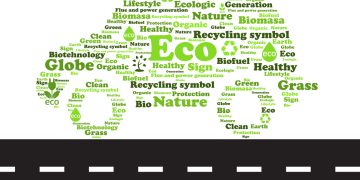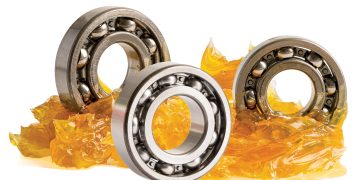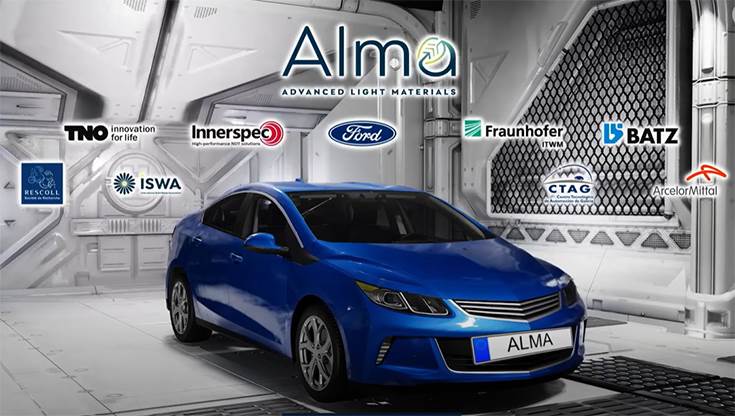In a significant stride toward advancing the European Union’s Green Deal objectives, the ALMA Project (Advanced Light Materials and Processes for the Eco-Design of Electric Vehicles) has unveiled a transformative breakthrough in the road transport sector, achieved through sustainable lightweighting.
The ALMA Project’s pioneering lightweight, efficient, and sustainable Battery Electric Vehicle (BEV) structure for passenger cars promises substantial progress in the EU’s green road transport transition away from fossil fuels. The ALMA BEV body-in-white (BiW) for the concept car is 22% lighter than the baseline design, resulting in a 24% reduction in carbon emissions for the BiW and a corresponding 9% reduction for the entire car over the vehicle’s service life.
Key highlights of the ALMA Project include:
– A 22% weight reduction in BEV BiW.
– A 24% reduction in CO2 emissions for BiW over the vehicle service life.
– A 9% emissions reduction for the entire car over the vehicle service life.
ALMA’s BEV BiW achieved a remarkable 22% weight reduction while decreasing carbon emissions by 24% in the BiW. Employing an Eco-Design approach and advanced materials, supported by TNO’s BEVSIM tool for Life Cycle Assessment (LCA) and Life Cycle Costing (LCC), the ALMA BEV BiW structure achieved a notable 22% weight reduction. Specifically, it achieved a noteworthy 160kg lighter car compared to the baseline BEV BiW design. The integration of advanced materials and weight reduction in the BiW contributed to a total decrease of 1,850 kg in CO2-eq (Carbon dioxide equivalent), resulting in a significant 24% CO2-eq reduction throughout the vehicle’s service life. For the entire car, the CO2-eq reduction was 9%.
As per the sustainable and smart mobility strategy, the EU aims to have at least 30 million zero-emission vehicles on its roads by 2030 and achieve a 90% reduction in transport-related greenhouse gas emissions by 2050. The ALMA Project’s accomplishment is poised to play a pivotal role in the bloc’s commitment to decarbonize road transport and promote circular economy approaches in the automotive industry, known for its significant carbon emissions, material intensity, and end-of-life vehicle disposal challenges.
The use of eco-design principles and advanced materials helped reduce EV weight, save materials, energy, and reduce carbon emissions while enhancing overall vehicle efficiency.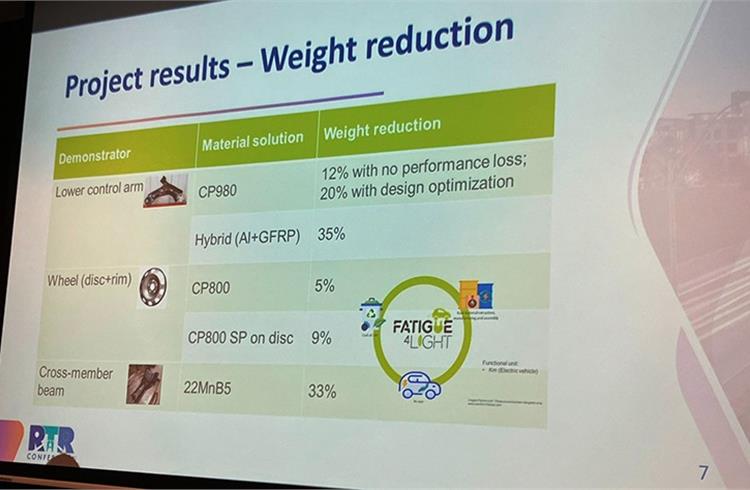
What is the ALMA Project?
The ALMA Project (Advanced Light Materials and Processes for the Eco-Design of Electric Vehicles) is an EU-funded project under Horizon 2020. The project consortium involves a diverse group of 9 partners from 4 different EU countries: France, Germany, the Netherlands, and Spain.
The group includes five market-oriented companies, three RTOs, and one International association; the consortium members, led by CTAG – Automotive Technology Centre of Galicia (Spain), include: ArcelorMittal Maizieres Research (France), Ford-Werke (Germany), Innerspec Technologies Europe (Spain), BATZ S. Coop. (Spain), RESCOLL (France), Fraunhofer Gesellschaft zur Förderung der Angewandten Forschung E.V. (Germany), Nederlandse Organisatie voor Toegepast Natuurwetenschappelijk Onderzoek TNO (Netherlands), and ISWA – International Solid Waste Association (Netherlands).
The project aimed to improve the efficiency and driving range of electric vehicles (EVs) through sustainable lightweighting of the vehicle structure, saving energy and materials, thereby reducing carbon emissions. Furthermore, increasing environmental awareness and forthcoming stricter regulations demand the adoption of circular economy principles across the entire vehicle life cycle.
This was a three-year project that aimed to achieve innovation and sustainability. To respond to this challenge, ALMA developed a novel battery electric vehicle (BEV) BiW structure for a passenger car with around 22% weight reduction compared to the current baseline at affordable costs. Thus, ALMA developed a multi-material modular platform made of a combination of Advanced High Strength Steels, Advanced-SMC, and steel-hybrid materials, characterized with multiscale model-based tools.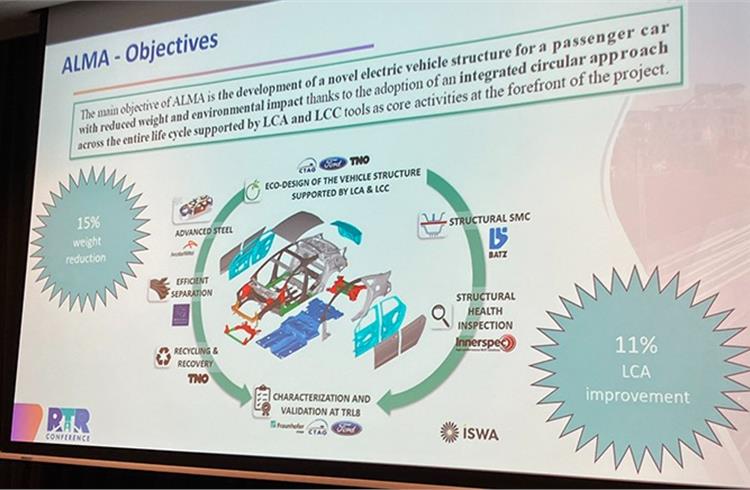
ALMA Project Achievements:
Eco-Design Approach for Sustainability: ALMA employed an Eco-Design approach, integrating Life Cycle Assessment (LCA) and Life Cycle Costing (LCC) methodologies, to develop a multi-material BEV structure. The innovative engineering achieved a 22% weight reduction from the baseline BEV BiW, meeting stringent crash requirements verified through Computer-Aided Engineering (CAE) analysis.
Collaborating with Ford and CTAG, ALMA’s holistic circular engineering approach was validated in real-world conditions through multiple crash scenarios. TNO’s LCA and LCC tool BEVSIM played a crucial role in evaluating the environmental impacts of materials at each stage, guiding informed decisions to minimize the environmental footprint while ensuring cost-effectiveness and manufacturability.
Efficient Manufacturing and Innovative Materials: Efficient manufacturing processes resulted in fewer references, and ArcelorMittal’s integration of high-performance steel grades contributed to reductions in material usage and corresponding vehicle weight savings. ArcelorMittal’s Multi-Part Integration concept using Laser Welded Blanks technology consolidated around 10 parts into a single, large component through a single stamping operation, achieving thinner profiles.
BATZ, along with Ford and CTAG, prioritized lightweighting using Sheet Moulding Compound (SMC) composites. Key achievements include the development of innovative Battery Lid and Cowl Panel designs, introducing advanced SMC-Tex endless glass fiber material where necessary to ensure crash protection and structural integrity with a similar performance to that obtained with steels or metals. Fraunhofer ITWM’s simulation methods, validated in collaboration with Ford, BATZ, and CTAG, demonstrated crash safety of SMC components while reducing vehicle weight.
Circularity: RESCOLL’s reversible assembly method using debondable adhesives ensured cost-effective and efficient separation at end-of-life, promoting circular practices in the automotive industry. Innerspec’s structural monitoring system, using acoustic signature analysis, showed promise in assessing wear and potential damages in composites and steel parts, enhancing the vehicle’s overall health monitoring system.
Recycling and Recovery of Materials: ArcelorMittal successfully demonstrated the recyclability of Fortiform S1270 through recycling trials. The trials also confirmed that the Ultimate (laminate) steel sheet does not release plastic fragments during shredding, reducing the risk of increased waste in shredded vehicle parts reaching landfills. For both products, tests showed no industrial or environmental issues. Therefore, end of life vehicles’ actual way of treatment and recycling can be applied to the new steel products and is thus demonstrated at TRL9.
On the other hand, TNO demonstrated the recycling and recovery of composite materials through pyrolysis and solvolysis processes. For both, the quality of recovered materials showed good potential for re-use, either in new materials, or, in the case of pyrolysis, also to fuel the process.